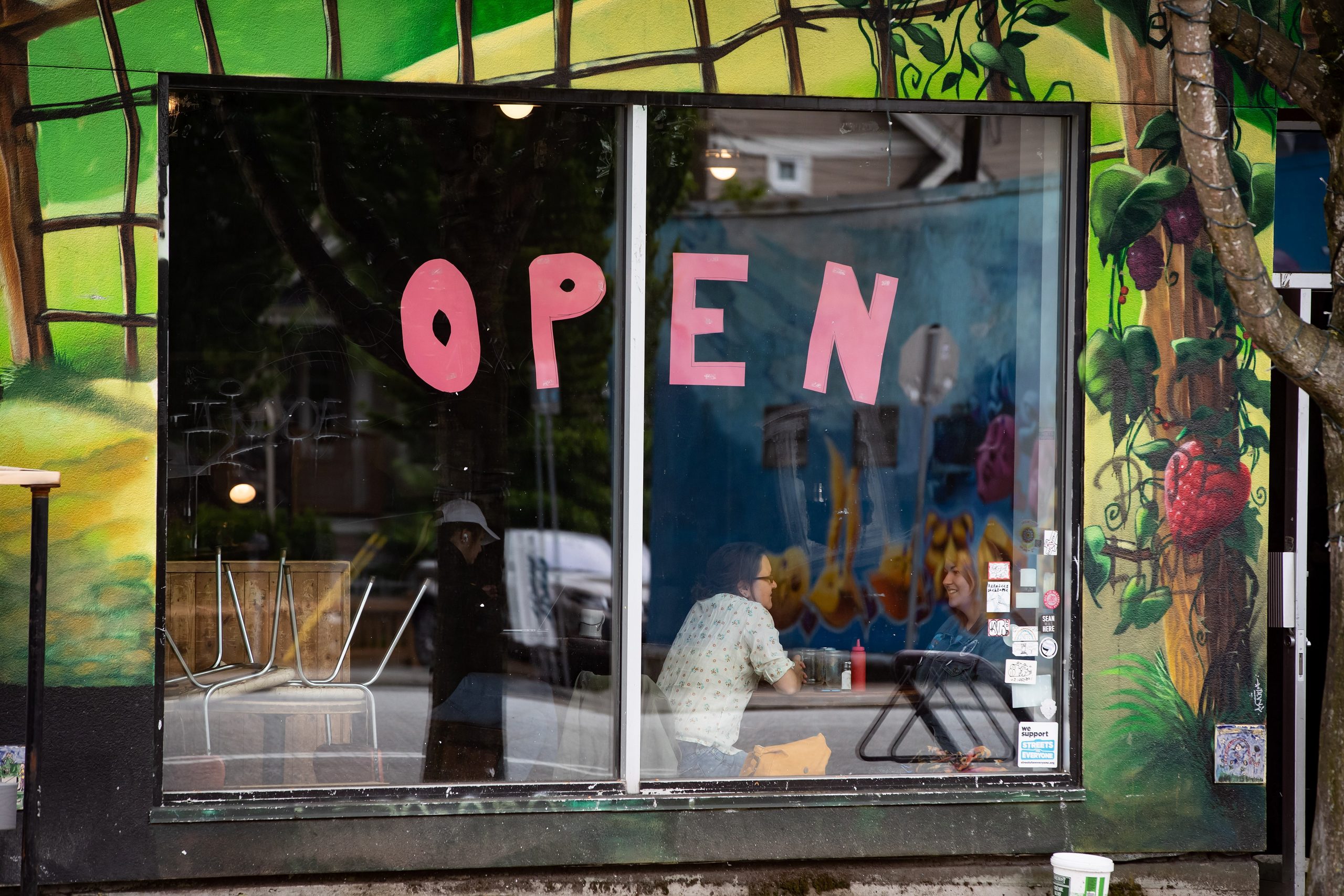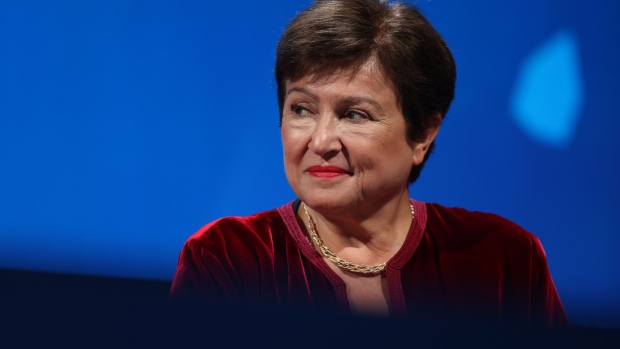Economy
Toronto stuck in Stage 1 as Ontario gradually opens economy – BNN

TORONTO — All regions of Ontario except for Toronto, Peel and Windsor-Essex will be in Stage 2 of the province’s phased reopening plan as of Friday.
Most areas of the province were allowed to enter the second stage last Friday, except for the Greater Toronto and Hamilton Area, some regions that border the United States and those with COVID-19 outbreaks among migrant workers.
Premier Doug Ford announced Monday that the regions that can join them this Friday are Durham, Haldimand-Norfolk, Halton, Hamilton, Lambton, Niagara and York.
“For the regions still remaining in Stage 1 — Toronto, Peel and Windsor-Essex — we ask you, please be patient because we can’t let our guard down,” Ford said.
“But the good news is the public health trends across the province are going in the right direction.”
The government is expected to provide another assessment of those regions’ progress next Monday.
Ontario reported 181 new cases of COVID-19 on Monday, with the majority in Toronto and Peel Region.
Toronto added 85 new cases, Peel added 41, and all other regions reported fewer than 10 each, including many with no new cases.
Windsor-Essex reported seven new cases Monday and 26 the day before. Health Minister Christine Elliott said the region is “very close” to being able to open up, but noted that a number of people in the community, including health professionals, cross the United States border for work.
The total of 181 is the lowest number of new daily cases since late March. It brings the province to a total of 32,370, including 2,527 deaths — eight more than the previous day — and 27,213 resolved cases.
The number of people in hospital with COVID-19 dropped from 438 to 419, and the number of people on ventilators decreased as well, while intensive care rates remained stable.
Ontario completed 21,751 tests in the previous day, with Health Minister Christine Elliott noting that the falling number of new cases coincides with increased rates of testing, keeping the positivity rate at “all-time lows.”
Which of these are you most excited to do as economies reopen?
Total Results: 0
The number of long-term care homes with active COVID-19 outbreaks rose by two since Sunday, to 69.
According to the Ministry of Long-Term Care, 32 homes that had previous outbreaks declared resolved have re-entered outbreak situations.
That includes Pinecrest Nursing Home in Bobcaygeon, Ont., where nearly half of the residents died due to COVID-19. The facility had been outbreak-free since mid-May.
Nearly 1,800 long-term care residents in Ontario have died amid outbreaks, according to data from the Ministry of Long-Term Care.
In London, Ont., the local health unit announced Monday that someone who attended a Black Lives Matter rally in the city on June 6 has tested positive for COVID-19. The person was wearing a mask, and was not symptomatic at the protest, nor have they developed any symptoms since, the Middlesex-London Health Unit said.
Meanwhile, the tourism and culture minister announced Monday that she will embark on a provincewide tour to promote local tourism. The province is investing $13 million to encourage Ontarians to explore their own backyards, Lisa MacLeod said.
“By focusing our support through local marketing campaigns and staycations, we’ll be ready to welcome the world back to Ontario when it is safe to do so,” she said.
MacLeod estimated the sector in Ontario has taken a $20-billion hit.
NDP Leader Andrea Horwath called MacLeod’s tourism tour another mixed message coming out of the government, which has urged Ontarians to continue avoiding non-essential travel.
“The last thing you need then is to have someone deciding they’re going to travel Ontario at a time when people are being urged to be thoughtful about where they’re going,” she said.
Economy
Nigeria's Economy, Once Africa's Biggest, Slips to Fourth Place – Bloomberg


Nigeria’s economy, which ranked as Africa’s largest in 2022, is set to slip to fourth place this year and Egypt, which held the top position in 2023, is projected to fall to second behind South Africa after a series of currency devaluations, International Monetary Fund forecasts show.
The IMF’s World Economic Outlook estimates Nigeria’s gross domestic product at $253 billion based on current prices this year, lagging energy-rich Algeria at $267 billion, Egypt at $348 billion and South Africa at $373 billion.
Economy
IMF Sees OPEC+ Oil Output Lift From July in Saudi Economic Boost – BNN Bloomberg


(Bloomberg) — The International Monetary Fund expects OPEC and its partners to start increasing oil output gradually from July, a transition that’s set to catapult Saudi Arabia back into the ranks of the world’s fastest-growing economies next year.
“We are assuming the full reversal of cuts is happening at the beginning of 2025,” Amine Mati, the lender’s mission chief to the kingdom, said in an interview in Washington, where the IMF and the World Bank are holding their spring meetings.
The view explains why the IMF is turning more upbeat on Saudi Arabia, whose economy contracted last year as it led the OPEC+ alliance alongside Russia in production cuts that squeezed supplies and pushed up crude prices. In 2022, record crude output propelled Saudi Arabia to the fastest expansion in the Group of 20.
Under the latest outlook unveiled this week, the IMF improved next year’s growth estimate for the world’s biggest crude exporter from 5.5% to 6% — second only to India among major economies in an upswing that would be among the kingdom’s fastest spurts over the past decade.
The fund projects Saudi oil output will reach 10 million barrels per day in early 2025, from what’s now a near three-year low of 9 million barrels. Saudi Arabia says its production capacity is around 12 million barrels a day and it’s rarely pumped as low as today’s levels in the past decade.
Mati said the IMF slightly lowered its forecast for Saudi economic growth this year to 2.6% from 2.7% based on actual figures for 2023 and the extension of production curbs to June. Bloomberg Economics predicts an expansion of 1.1% in 2024 and assumes the output cuts will stay until the end of this year.
Worsening hostilities in the Middle East provide the backdrop to a possible policy shift after oil prices topped $90 a barrel for the first time in months. The Organization of Petroleum Exporting Countries and its allies will gather on June 1 and some analysts expect the group may start to unwind the curbs.
After sacrificing sales volumes to support the oil market, Saudi Arabia may instead opt to pump more as it faces years of fiscal deficits and with crude prices still below what it needs to balance the budget.
Saudi Arabia is spending hundreds of billions of dollars to diversify an economy that still relies on oil and its close derivatives — petrochemicals and plastics — for more than 90% of its exports.
Restrictive US monetary policy won’t necessarily be a drag on Saudi Arabia, which usually moves in lockstep with the Federal Reserve to protect its currency peg to the dollar.
Mati sees a “negligible” impact from potentially slower interest-rate cuts by the Fed, given the structure of the Saudi banks’ balance sheets and the plentiful liquidity in the kingdom thanks to elevated oil prices.
The IMF also expects the “non-oil sector growth momentum to remain strong” for at least the next couple of years, Mati said, driven by the kingdom’s plans to develop industries from manufacturing to logistics.
The kingdom “has undertaken many transformative reforms and is doing a lot of the right actions in terms of the regulatory environment,” Mati said. “But I think it takes time for some of those reforms to materialize.”
©2024 Bloomberg L.P.
Economy
IMF Boss Says ‘All Eyes’ on US Amid Risks to Global Economy – BNN Bloomberg


(Bloomberg) — The head of the International Monetary Fund warned the US that the global economy is closely watching interest rates and industrial policies given the potential spillovers from the world’s biggest economy and reserve currency.
“All eyes are on the US,” Kristalina Georgieva said in an interview on Bloomberg’s Surveillance on Thursday.
The two biggest issues, she said, are “what is going to happen with inflation and interest rates” and “how is the US going to navigate this world of more intrusive government policies.”
The sustained strength of the US dollar is “concerning” for other currencies, particularly the lack of clarity on how long that may last.
“That’s what I hear from countries,” said the leader of the fund, which has about 190 members. “How long will the Fed be stuck with higher interest rates?”
Georgieva was speaking on the sidelines of the IMF and World Bank’s spring meetings in Washington, where policymakers have been debating the impacts of Washington and Beijing’s policies and their geopolitical rivalry.
Read More: A Resilient Global Economy Masks Growing Debt and Inequality
Georgieva said the IMF is optimistic that the conditions will be right for the Federal Reserve to start cutting rates this year.
“The Fed is not yet prepared, and rightly so, to cut,” she said. “How fast? I don’t think we should gear up for a rapid decline in interest rates.”
The IMF chief also repeated her concerns about China devoting too much capital and labor toward export-oriented manufacturing, causing other countries, including the US, to retaliate with protectionist policies.
China Overcapacity
“If China builds overcapacity and pushes exports that create reciprocity of action, then we are in a world of more fragmentation not less, and that ultimately is not good for China,” Georgieva said.
“What I want to see China doing is get serious about reforms, get serious about demand and consumption,” she added.
A number of countries have recently criticized China for what they see as excessive state subsidies for manufacturers, particularly in clean energy sectors, that might flood global markets with cheap goods and threaten competing firms.
US Treasury Secretary Janet Yellen hammered at the theme during a recent trip to China, repeatedly calling on Beijing to shift its economic policy toward stimulating domestic demand.
Chinese officials have acknowledged the risk of overcapacity in some areas, but have largely portrayed the criticism as overblown and hypocritical, coming from countries that are also ramping up clean energy subsidies.
(Updates with additional Georgieva comments from eighth paragraph.)
©2024 Bloomberg L.P.
-



 Investment20 hours ago
Investment20 hours agoUK Mulls New Curbs on Outbound Investment Over Security Risks – BNN Bloomberg
-



 Sports19 hours ago
Sports19 hours agoAuston Matthews denied 70th goal as depleted Leafs lose last regular-season game – Toronto Sun
-
Media1 hour ago
Trump Media alerts Nasdaq to potential market manipulation from 'naked' short selling of DJT stock – CNBC
-
Business17 hours ago
BC short-term rental rules take effect May 1 – CityNews Vancouver
-
Art17 hours ago
Collection of First Nations art stolen from Gordon Head home – Times Colonist
-



 Investment17 hours ago
Investment17 hours agoBenjamin Bergen: Why would anyone invest in Canada now? – National Post
-



 Tech20 hours ago
Tech20 hours agoSave $700 Off This 4K Projector at Amazon While You Still Can – CNET
-



 Tech19 hours ago
Tech19 hours ago'Kingdom Come: Deliverance II' Revealed In Epic New Trailer And It Looks Incredible – Forbes




